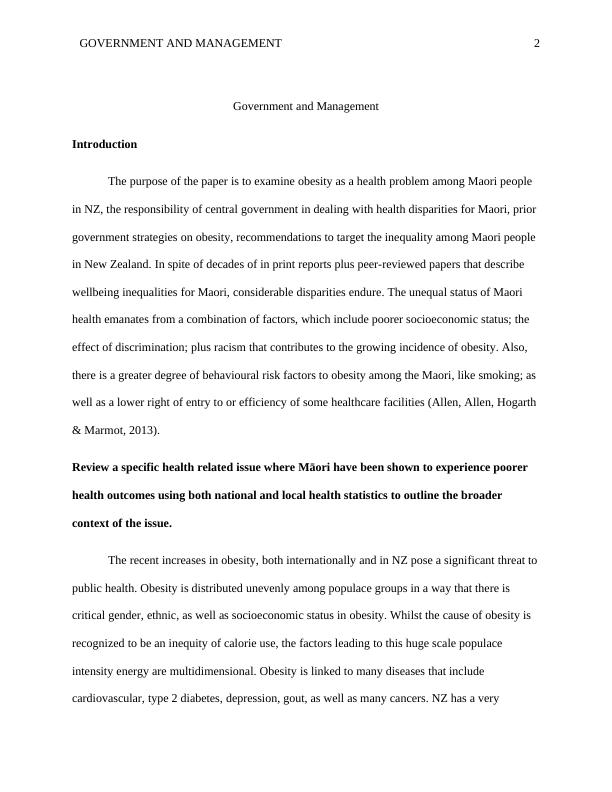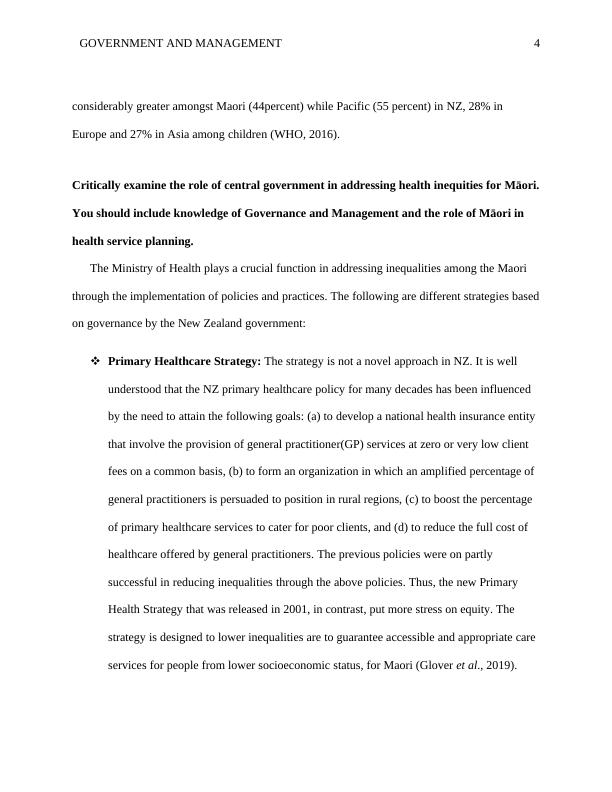Government and Management
This assessment requires a report on the health inequalities among Maori in New Zealand and the role of the government in addressing these disparities. The report should include a review of a specific health issue, an examination of the government's role, an analysis of current strategies or policies, and recommendations for improving health outcomes for Maori.
Added on 2022-12-12
About This Document
Government and Management
This assessment requires a report on the health inequalities among Maori in New Zealand and the role of the government in addressing these disparities. The report should include a review of a specific health issue, an examination of the government's role, an analysis of current strategies or policies, and recommendations for improving health outcomes for Maori.
Added on 2022-12-12
End of preview
Want to access all the pages? Upload your documents or become a member.




